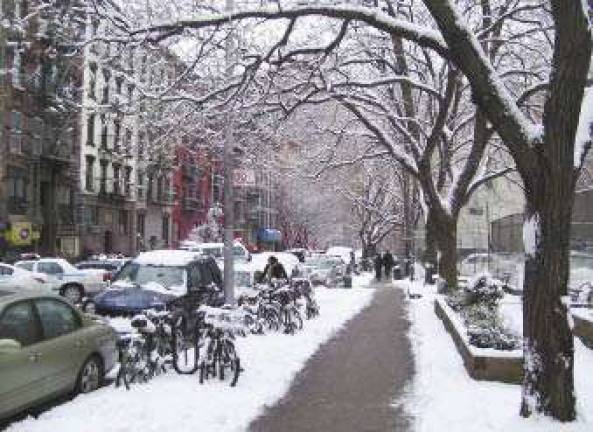Top Five Reasons for Winter ER Visits

Knowing the risks that accompany cold and inclement weather can help keep you out of the ER this season.
New Yorkers walk a lot, which means we're battling snow and ice hazards even on familiar commutes. Once indoors, there's a slippery situation - snow and ice that was tracked onto lobby floors.
Dr. Marc Felberbaum, who works for the Department of Emergency Medicine at Beth Israel Medical Center, says the best way to avoid injury is to be aware of the environment. "From what we see, there has been an increase in slip and fall injuries because people were walking while talking on their cell phones and generally not paying attention." Wintery conditions certainly make it that much more dangerous. Here are some safety measures you can try:
Ensure your walkways and driveways are properly cleared of snow and ice.
Wear appropriate shoes or boots that will provide good traction for stable footing.
Walk carefully, particularly at night, when you may not be able to see ice on the ground.
If you have osteoporosis or brittle bones, consider waiting until sidewalks are clear, and don't hesitate to ask for help getting around.
2. Winter Sports Injuries
Whether you're skiing, snowboarding, ice skating or sledding, there is always a small risk for fractures and ligament damage as well as head and spine injuries.
According to Dr. Felberbaum, head, back and neck injuries should be taken seriously and so should fractures. But some minor injuries can be treated at home. A good rule of thumb is to evaluate whether you have mobility or can put weight on the injury. If so, you can try the soft-tissue treatment known as RICE (rest, ice, compression and elevation) before heading to the doctor.
Warming up properly, wearing protective gear and using the right equipment will help minimize and prevent injuries too.
3. Shoveling-Induced Heart Attacks
It's true that shoveling heavy, wet snow can cause excessive strain on the heart, especially for those who aren't normally physically active, are smokers, have heart disease or other health risks.
Before shoveling, warm up with some stretching. Then be sure to dress warmly, stay hydrated and take frequent breaks. Shovel more light loads instead of fewer heavy ones. "Don't ignore heart attack symptoms, like chest pain, dizziness or shortness of breath," says Dr. Felberbaum. "Call 9-1-1 if you think you're having a heart attack."
4. Exposure to the cold
Most New Yorkers don't have to worry about hypothermia and frostbite, but it's always good to be prepared. Being stuck outside in the elements could put you at risk.
You can prevent cold-weather threats by layering your clothing, starting with a dry-wicking material closest to your skin and then layer with cotton or wool. Remember your hat, gloves and scarf, and when it comes to footwear, choose function over fashion. Water-resistant and insulated shoes or boots are the best.
5. Influenza
A flu shot and good hand washing habits are important in the winter.
If you get sick, try to rest as much as possible and don't rush back to your normal routine. "If you have the flu, stay home, because you'll recover faster and minimize your chances of passing it on to others," Dr. Felberbaum says. Flu symptoms like a fever higher than 102 degrees, severe fatigue, dehydration and shortness of breath are signs you may need to visit the ER.
If you suffer from chronic illnesses like diabetes or heart failure, or if you're elderly, ask your doctor if you should get a pneumonia vaccine.